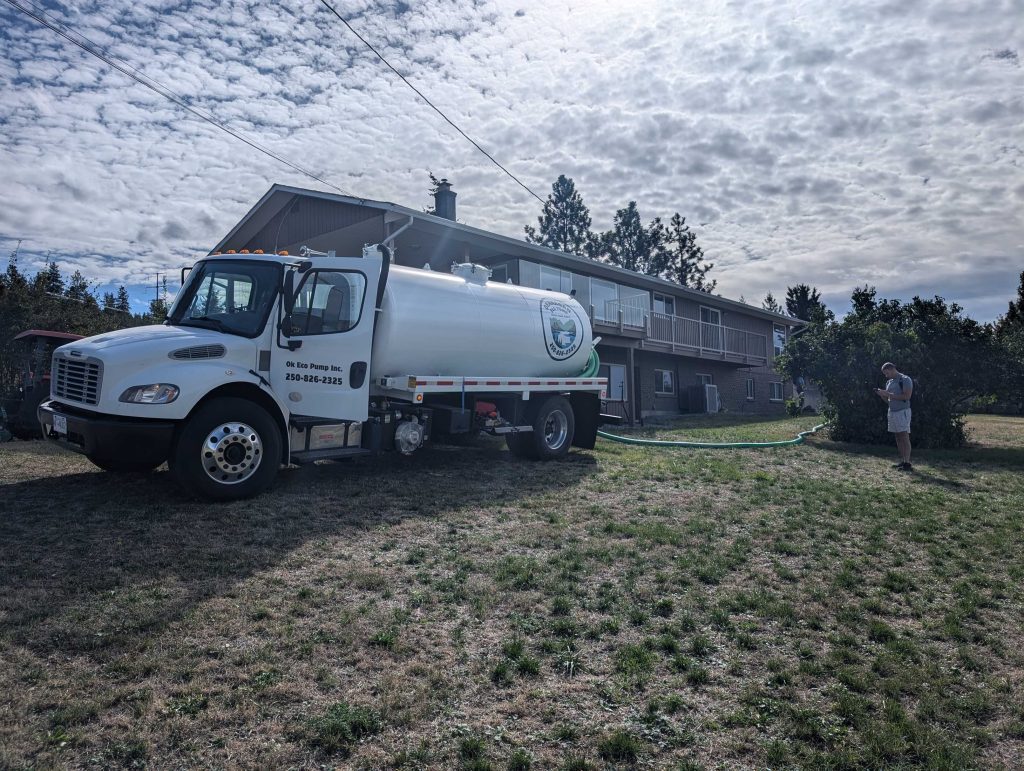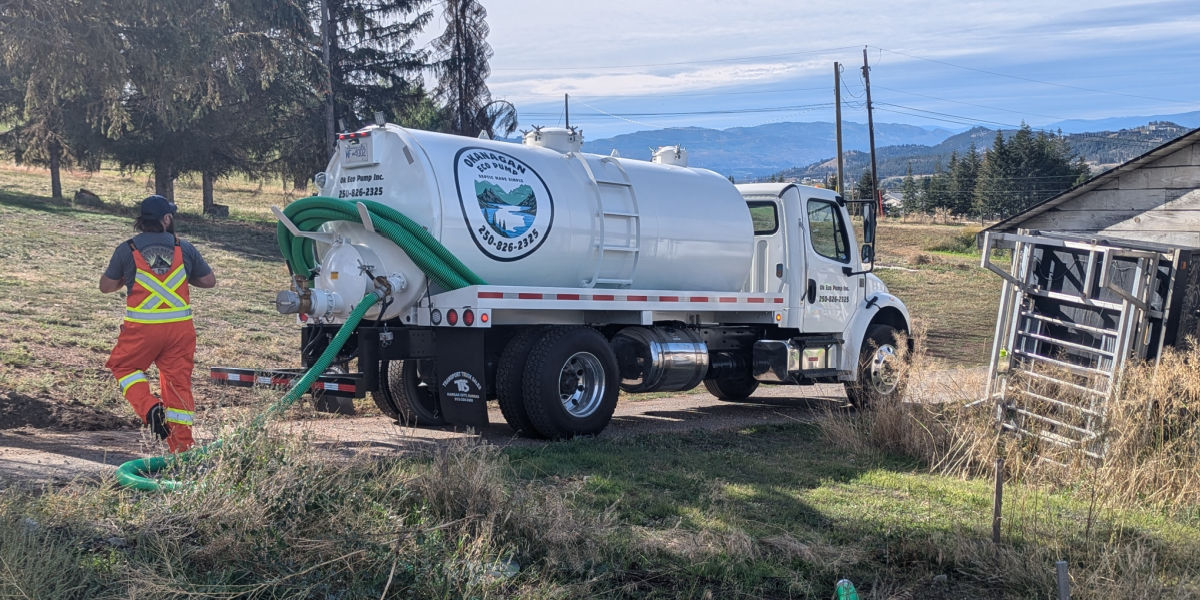West Kelowna Septic Services: Quality Septic Tank Repair
Wiki Article
Complete Septic Solutions Kelowna: Installation Services
Septic techniques serve as a vital alternative to centralized sewage treatment for properties not related to municipal sewer techniques. Understanding how septic methods work is crucial for homeowners, as proper maintenance can extend the lifetime of the system and ensure a hygienic dwelling environment. At their core, septic techniques function by treating wastewater generated from every day family activities similar to showering, toilet use, and washing dishes. The main parts of a septic system include the septic tank, soil absorption system, and the drain area. Wastewater from the house flows into the septic tank the place preliminary treatment begins. The tank is usually constructed from concrete, fiberglass, or plastic and is buried underground. This tank holds sewage long sufficient for solids to settle at the bottom, forming sludge, whereas lighter materials like grease and oil float to the highest, creating scum. As wastewater enters the septic tank, it fills to a specific degree after which steadily exits through an outlet pipe. This outlet pipe results in the drain field, a crucial area for additional treatment of the wastewater. Designed with a series of perforated pipes buried in gravel, the drain area permits treated water to slowly seep into the encompassing soil. The soil acts as a pure filter, additional breaking down harmful bacteria and vitamins earlier than the water enters the groundwater supply.
Reliable Septic Services Kelowna: Experienced Septic Professionals
The biological processes within the septic tank play an important role in breaking down stable waste. Anaerobic bacteria thrive in the oxygen-deprived environment, consuming natural matter and decreasing the volume of sludge. Over time, the bacteria convert waste into less complicated compounds, enabling the treated effluent to move into the drain area. However, this course of depends on the balance of microorganisms throughout the tank, making it crucial to keep away from introducing dangerous chemicals that may disrupt this ecosystem.The drain subject is an important component because it disperses the treated wastewater into the bottom. Every drain field has a particular design based on soil kind, landscape, and native regulations. The depth and width of trenches in the drain subject have to be deliberate rigorously to make sure optimum drainage and filtration. Over many years, soil particles, microorganisms, and natural matter continuously interact to purify the handled effluent.
Kelowna Septic Services: Professional Septic Tank Pumping & Repair
Whereas septic techniques usually operate effectively with minimal intervention, they do require regular maintenance to perform efficiently. Pumping the septic tank every three to five years is essential to take away amassed sludge and forestall clogs. Failing to take action can lead to backups in the system, causing unpleasant odors and potential environmental contamination. Owners also wants to be vigilant about what goes into the system, avoiding flushing non-biodegradable gadgets or pouring toxic chemicals down the drain.Bacterial components are generally marketed to owners as a method to improve the effectivity of their septic systems. Nonetheless, many professionals advise towards their routine use, as they can upset the fragile stability of micro organism that already exists in a healthy septic tank. Common pumping and maintenance should suffice for preserving the system functioning effectively. Owners can better guarantee long-term performance by being proactive with their septic maintenance. In addition to regular pumping, householders need to handle their water usage successfully. Diverting excess water away from the drain area is important; saturating the realm can hinder proper wastewater treatment. Implementing water-saving fixtures and spreading out laundry and dishwashing activities all through the week can prevent overwhelming the system.

Potential signs of septic system failure include sluggish drains, unpleasant odors, and pooling water close to the drain area. Addressing these points promptly with the help of an expert can save homeowners from extra extensive repairs down the road. Neglecting these symptoms can result in costly repairs and environmental hazards.
Best Septic Services Kelowna: Top Rated Septic Contractors
Native regulations typically affect how septic methods are designed and installed. Householders are generally encouraged to consult with professionals familiar with local codes to make sure they are in compliance. In many areas, permits could also be required earlier than putting in a septic system, and these regulations assist keep public health and safety. One of probably the most significant advantages of septic systems is their capacity to reduce environmental air pollution. Correctly maintained methods treat wastewater on-site and may minimize impact on native water sources. This is especially essential in rural areas where municipal sewage systems could not exist, making septic methods essential for sustainable living. In conclusion, understanding how septic techniques work deepens the appreciation for the function they play in protecting public health and the environment. Householders can benefit from proper knowledge of their septic techniques, including maintenance and care practices that prolong their usability. With sufficient consideration to regular repairs and adherence to native regulations, septic systems can provide safe and efficient wastewater treatment for many years. By treating waste responsibly, individuals contribute to a healthier ecosystem and ensure the longevity of their investment in their septic techniques.- Septic methods are designed to treat wastewater from homes not linked to a centralized sewage system, utilizing a mix of organic and mechanical processes.
- Wastewater enters the septic tank, where solids settle to the underside, forming sludge, while lighter supplies like grease float to the top, creating scum.
- Bacteria throughout the septic tank play a vital position in breaking down natural matter, aiding within the decomposition process and decreasing the volume of stable waste.
- Periodic maintenance is essential, together with pumping the tank every three to 5 years, to prevent clogs and guarantee optimal functioning.
- After the treatment within the septic tank, partially clarified wastewater flows into a drain subject, where it's further filtered via soil, eradicating pathogens and nutrients.
- The drain subject consists of a series of perforated pipes specified by trenches, designed to disperse effluent evenly and promote natural filtration.
- Correctly functioning septic systems help protect groundwater and floor water from pollution, essential for sustaining general environmental health.
- Owners should keep away from utilizing harsh chemicals or flushing non-biodegradable objects, as they can disrupt the pure bacterial processes within the septic system.
- Landscaping decisions over septic systems—like planting grass as a substitute of trees—can prevent root intrusion that may injury pipes and compromise the system's integrity.
- Monitoring for signs of failure, corresponding to slow drains, foul odors, or moist spots within the yard, can help tackle potential points before they escalate into pricey repairs. How Septic Techniques Work
Reliable Septic Services Kelowna: Experienced Septic Professionals
What is a septic system and the way does it function?undefinedA septic system read the full info here is an underground wastewater treatment construction sometimes used in rural areas. It functions by accumulating and treating family wastewater via a series of processes together with settling, anaerobic digestion, and soil filtration. Wastewater flows into the septic tank, the place solids settle at the bottom, and effluent is launched into the drain area for further treatment within the soil (septic system maintenance schedule Kelowna). How do I know if my septic system is functioning properly?undefinedSigns of a malfunctioning septic system include gradual drains, unpleasant odors around the tank or drain area, standing water in your yard, and sewage backup in plumbing fixtures. Common inspections and pumping each 3-5 years can help guarantee proper functioning and determine potential issues early. What maintenance do septic techniques require?undefinedSeptic methods require regular pumping to take away accumulated solids and forestall clogs. Additionally, you must keep away from flushing non-biodegradable items and restrict usage of harsh chemicals that may disrupt the bacterial balance important for proper breakdown of waste.Emergency Septic Service Kelowna: 24-Hour Availability for Septic Issues
How long does a septic system last?undefinedWith proper maintenance, a septic system can final 20 to 30 years or extra. Components affecting longevity embody system design, soil situations, maintenance frequency, and the quantity of wastewater generated. What ought to I avoid putting down my drains if I even have a septic system?undefinedAvoid flushing non-biodegradable items, such as wipes, sanitary merchandise, and plastics. Moreover, reduce the disposal of fats, oils, grease, and harsh chemical compounds that can harm the bacteria needed for effective waste degradation.
Kelowna Septic System Services: Maintenance for Residential Properties
Can I plant grass or shrubs over my septic system?undefinedSure, you can plant grass over your drain subject as it helps with absorption and erosion control. Nevertheless, it is important to avoid deep-rooted timber and huge shrubs as their roots can damage the septic system elements. What occurs throughout a septic system inspection?undefinedDuring an inspection, knowledgeable will consider the septic tank, verify the effluent stage, assess the drain field, and look for signs of malfunction. They can also inspect the distribution field and any pumping mechanisms to make sure everything is operating appropriately. septic system compliance Kelowna.Emergency Septic Service Kelowna: Weekend Septic Service
How a lot does it cost to put in a septic system?undefinedThe cost of installing a septic system can range extensively depending on components similar to location, soil type, system dimension, and local regulations. On common, bills can range from $3,000 to $10,000 or extra, including permits and excavation work.
Is it possible to transform to a septic system from a standard sewer system?undefinedYes, changing from a standard sewer system to a septic system is feasible, however it requires a thorough analysis of local regulations, soil situations, and plumbing arrangements. Consulting a professional is important to ensure it's feasible and compliant with native legal guidelines. Report this wiki page